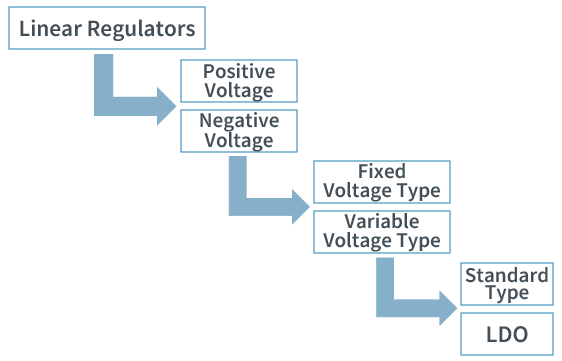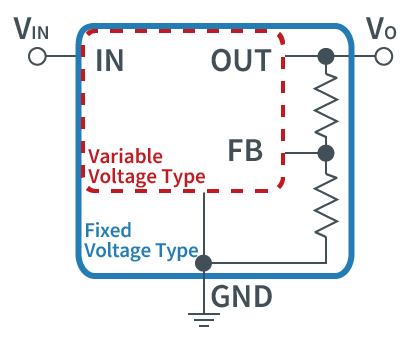dcdc_what7
Linear Regulator Classifications
<Function and Operating method>
Linear regulators are classified into several different types based on function and operating method.
Positive and Negative Voltage Types
Linear regulators classified by function are divided into positive and negative voltage types.
Depending on the circuit used, some require a negative voltage supply instead of positive.
With only a positive voltage supply it will be impossible to handle voltages below the ground potential and consequently the output voltage of the transistor cannot be made negative. A negative voltage can be generated by placing the control transistor on the negative output line.

Fixed and Variable Voltage Types
Next, linear regulators can be divided into fixed and variable voltage types. Fixed types have 3 pins: input, output, and ground, and include a built-in transistor for output voltage setting.
Variable regulators include ground reference types which add a feedback terminal, for a total of 4 pins. There are also floating operation types with no ground pin that have 3 pins.

Standard and LDO
The next classification for fixed and variable types is standard and LDO.
LDO, which stands for Low Dropout, is characterized by a low potential difference between the input and output. LDOs limit the difference to less than 1V, while with standard types the difference is typically at least 2V.
ROHM offers a wide lineup of general-purpose 3-pin linear regulators featuring low power consumption, high current capability, and high voltage resistance, making them ideal for mobile phones, automotive systems, consumer electronics, and commercial/industrial equipment.
electronics_tips_menu




